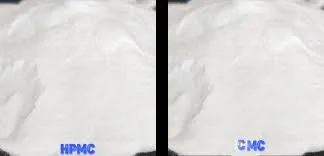
ئاۋغۇست . 20, 2024 03:18 Back to list
The Process of Producing Hydroxyethyl Cellulose Explained in Detail
Understanding the Production of Hydroxyethyl Cellulose
Hydroxyethyl cellulose (HEC) is a versatile, non-ionic water-soluble polymer derived from cellulose, which is one of the most abundant natural polymers found in plants. Its unique properties, such as thickening, stabilizing, and film-forming capabilities, make it a popular choice in various applications, including cosmetics, pharmaceuticals, and construction materials. Behind its utility lies a fascinating process of synthesis and modification.
The Raw Material Cellulose
The production of hydroxyethyl cellulose begins with cellulose, which is typically extracted from wood pulp or cotton. This natural polymer needs to undergo a series of treatments to make it suitable for further chemical modifications. The cellulose is first subjected to a process called mercerization, where it is treated with a sodium hydroxide solution. This step increases the reactivity of cellulose by breaking down its crystalline structure, making it more amenable to substitution reactions.
The Etherification Process
Once cellulose is prepared, the next step is the etherification process. During etherification, ethylene oxide—a colorless, flammable gas—is introduced to the mercerized cellulose. This process requires a controlled environment, as the reaction can be exothermic. The ethylene oxide reacts with the hydroxyl groups on the cellulose chains, resulting in the substitution of hydroxyethyl groups. This step transforms cellulose into hydroxyethyl cellulose, incorporating ethylene oxide into its structure.
Controlling the Degree of Substitution
how is hydroxyethyl cellulose made

The degree of substitution (DS) is a crucial parameter in the production of hydroxyethyl cellulose, as it influences the polymer’s solubility and viscosity. Manufacturers can control the DS by adjusting the quantities of ethylene oxide used during the etherification process and by regulating the reaction time and temperature. A higher degree of substitution generally leads to a product that is more soluble in water, which is advantageous for many applications.
Purification and Drying
After the etherification process is complete, the hydroxyethyl cellulose must be purified to remove any unreacted ethylene oxide and by-products. This purification typically involves washing the product with water and possibly other solvents to ensure that only the desired polymer remains. Following purification, the HEC is dried to achieve the desired moisture content and stability. This drying process can be done through various methods, such as spray drying or tray drying, depending on the desired end product characteristics.
Applications of Hydroxyethyl Cellulose
With its production seemingly complete, hydroxyethyl cellulose is ready for a multitude of applications. In the cosmetics industry, it is used as a thickening agent in creams and lotions, enhancing texture and stability. In pharmaceuticals, HEC acts as a controlled-release agent, improving the solubility and bioavailability of medication. The construction industry utilizes HEC in cement and mortar formulations, where it enhances workability and prevents water loss.
Conclusion
Hydroxyethyl cellulose serves as an exemplary case of how natural materials can be transformed into functional products through chemical modifications. By understanding the detailed steps involved in its production—from cellulose extraction to etherification and purification—one can appreciate the complexity and significance of HEC in various industries. As technology advances, the methods for synthesizing and applying hydroxyethyl cellulose will likely continue to evolve, further expanding its potential uses.
-
The Widespread Application of Redispersible Powder in Construction and Building Materials
NewsMay.16,2025
-
The Widespread Application of Hpmc in the Detergent Industry
NewsMay.16,2025
-
The Main Applications of Hydroxyethyl Cellulose in Paints and Coatings
NewsMay.16,2025
-
Mortar Bonding Agent: the Key to Enhancing the Adhesion Between New and Old Mortar Layers and Between Mortar and Different Substrates
NewsMay.16,2025
-
HPMC: Application as a thickener and excipient
NewsMay.16,2025
-
Hec Cellulose Cellulose: Multi functional dispersants and high-efficiency thickeners
NewsMay.16,2025







